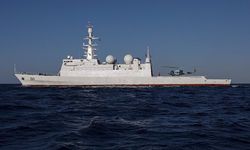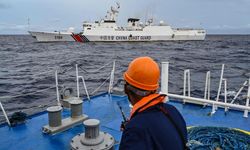The pier, built to accommodate larger vessels, is part of broader development at the base, including dry docks and new facilities, which are also funded by China.
The Cambodian government has consistently denied claims that the base is being used by the Chinese military. Cambodian officials point to the country’s constitution, which prohibits any permanent foreign military presence, and emphasize that Ream remains open for use by all friendly nations. Seun Sam, a policy analyst at the Royal Academy of Cambodia, reaffirmed that Ream is a Cambodian base and that Cambodia seeks military training support from foreign partners like China.
Chinese Investment in Cambodia
However, the presence of Chinese warships and the scale of Chinese investment at the base has raised suspicions in the United States, which has been monitoring China’s growing naval power. While China currently operates only one overseas military base in Djibouti, there are concerns that its Belt and Road Initiative could lead to the development of a global network of military or dual-use ports. Ream is seen as potentially one of the first in Southeast Asia.
Previously, Ream was upgraded with U.S. military aid, but relations shifted after 2017 when Cambodia’s government, increasingly dependent on Chinese investment, stopped joint military exercises with the U.S. and began holding drills with China instead. Since then, Chinese-funded construction at Ream has intensified, including the new pier that bears a striking resemblance to China’s military base in Djibouti.
Despite assurances from Cambodia that the ships are there for training ahead of joint exercises, satellite images show that the Chinese warships have been berthed at Ream for much of the year. The Cambodian government maintains that China’s presence is not permanent and no formal military base has been established.
This has not eased concerns in Washington, where officials remain wary of China’s potential long-term plans for the region. The U.S. focuses on the strategic implications of Ream’s location near the Gulf of Thailand, with neighboring countries like Vietnam and Thailand also expressing concern over possible security threats.
Experts like Kirsten Gunness from the Rand Corporation suggest that China may be operating within Cambodia’s constitutional limits by not officially designating the site as a base, while still maintaining a rotating presence.
Though analysts believe that Ream’s current role does not significantly increase China’s power projection, its location could offer China valuable intelligence-gathering opportunities in Southeast Asia. For now, the base’s future remains uncertain, but it is being closely watched by regional and global powers.






